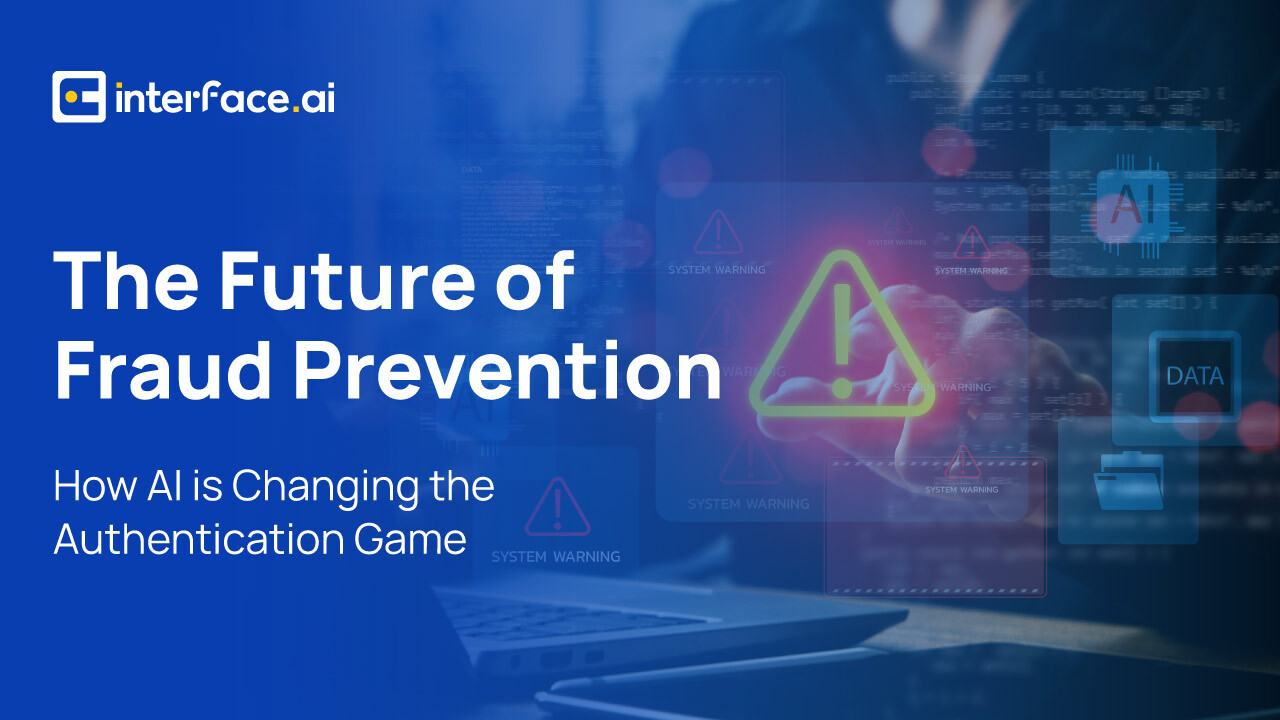
The Future of Fraud Prevention: How AI is Changing the Authentication Game
Fraud is no longer a side battle – it’s a technological arms race. As AI empowers fraudsters to mimic voices, craft perfect phishing scripts, and bypass static security systems, traditional authentication methods are collapsing under the pressure.
For credit unions and banks built on trust, this moment calls for evolution, not hesitation. The same intelligence fuelling new attacks must now be used to outsmart them. AI isn’t just reshaping how fraud happens – it’s redefining how we fight back.
The future of authentication isn’t built on barriers, but on intelligence – systems that learn, adapt, and act faster than fraudsters ever could. This is the new battleground for trust: secure, dynamic, and powered by AI.
The problem with traditional authentication
Traditional authentication methods such as PINs, passwords, and security questions once defined digital security. Today, they are the weakest link. The challenges are clear:
- Credential theft: Stolen credentials and reused passwords make it easy for criminals to gain access.
- Social engineering: Fraudsters use leaked data to impersonate members and trick contact center agents.
- Member frustration: Repetitive and outdated authentication steps create friction and damage trust.
- Operational inefficiency: Manual verification wastes valuable agent time and slows service.
The rise of data breaches, deepfakes, and AI-driven scams means that static authentication can no longer protect credit unions or banks. A new, dynamic approach is required.
How AI-powered authentication is transforming fraud prevention
AI fundamentally changes how identity is verified. Instead of relying on what a member or customer knows, AI systems verify who they are and how they behave. This creates a living, adaptive layer of defence that evolves with every interaction.
This shift marks a turning point in the fight against fraud. Where traditional security relied on static data points – passwords, PINs, and challenge questions – AI uses dynamic intelligence. It analyzes behavior, context, and risk signals in real time to identify legitimate members and expose even the most sophisticated imposters.
By using the same intelligence that powers modern fraud, fraud prevention AI enables credit unions and banks to predict, detect, and prevent threats before they happen, securing every channel without slowing the experience.
1. Adaptive, risk-based authentication
AI evaluates every interaction based on real-time data. It analyzes device type, IP address, location, behavior, and transaction patterns to assign a risk score.
Low-risk interactions are approved seamlessly, while higher-risk ones trigger additional checks such as biometrics or secondary authentication. This approach keeps genuine members or customers moving smoothly while applying extra scrutiny to suspicious activity.
2. Continuous behavioral authentication
AI monitors ongoing interactions to ensure that behavior remains consistent with the genuine member’s or customer’s profile. It looks at details like typing rhythm, navigation habits, and even voice cadence to identify anomalies.
In contact centers, Voice AI can detect subtle differences in speech patterns or vocal tone that indicate impersonation or synthetic voice use. If suspicious behavior appears, the system alerts the agent or requests extra verification in real time. This continuous authentication approach protects the member throughout the session, not just at login.
3. Device biometrics integration
Biometric authentication has become a standard feature for smartphones. Users already use their fingerprint or face ID to access their devices. Integrating those same biometric credentials into credit union authentication provides both convenience and confidence.
With interface.ai’s Fraud Prevention AI, biometric verification is enhanced by contextual intelligence. Even if a fingerprint or face ID matches, the system checks for other signs of risk such as location changes, network anomalies, or device inconsistencies. This multi-layered intelligence ensures stronger protection and a seamless experience for the end user.
4. Caller ID forensics
When someone calls into the contact center, AI authentication begins before anyone speaks. Caller ID forensics uses advanced analytics to examine the call’s origin and context in real time – stopping fraud at the front door.
It protects members by identifying red flags such as SIM swap detection, burner phone recognition, and geo-location verification. When combined with voice biometrics and behavioral analytics, Caller ID forensics provides a multi-layered defense that prevents fraud before it reaches an agent.
Financial institutions leading the shift to AI fraud prevention
Across the industry, forward-thinking credit unions and banks are proving that the best way to fight AI fraud is with AI-powered defense. By deploying interface.ai’s Fraud Prevention AI, they’re building a unified system that combines adaptive risk scoring, behavioral and voice biometrics, device intelligence, and caller ID forensics into one continuous layer of protection.
It allows institutions to move from reactive fraud response to proactive fraud prevention, securing every channel before an attack can even begin.
Dupaco Credit Union is one of the leaders in this transformation. With AI-driven voice and device authentication in its contact center, Dupaco has strengthened its fraud defenses while maintaining the speed and trust its members expect.
As Todd Link, Chief Risk Officer at Dupaco Credit Union, puts it, ‘The only way we’re going to compete with AI fraudsters is to combat it with AI itself. With interface.ai, we’re now using the same level of security technology as the Mastercards and Visas of the world – right in our own contact center.’”
Dupaco’s results speak for themselves – stronger defense, faster authentication, and renewed member confidence powered by AI.
Watch the Dupaco Credit Union webinar to see how they are using Fraud Prevention AI for stronger defense and smoother authentication.
Ready to redefine authentication?
Static security belongs to the past. AI authentication is now the foundation of modern fraud prevention. Credit unions and banks that adopt it are not just protecting their members and customers – they are elevating trust and redefining CX.
Read this guide to dig deeper into how next-gen authentication is stopping fraud and streamlining service.
AI Insights for Credit Union & Community Bank Leaders
Join the monthly newsletter for all the latest industry updates

